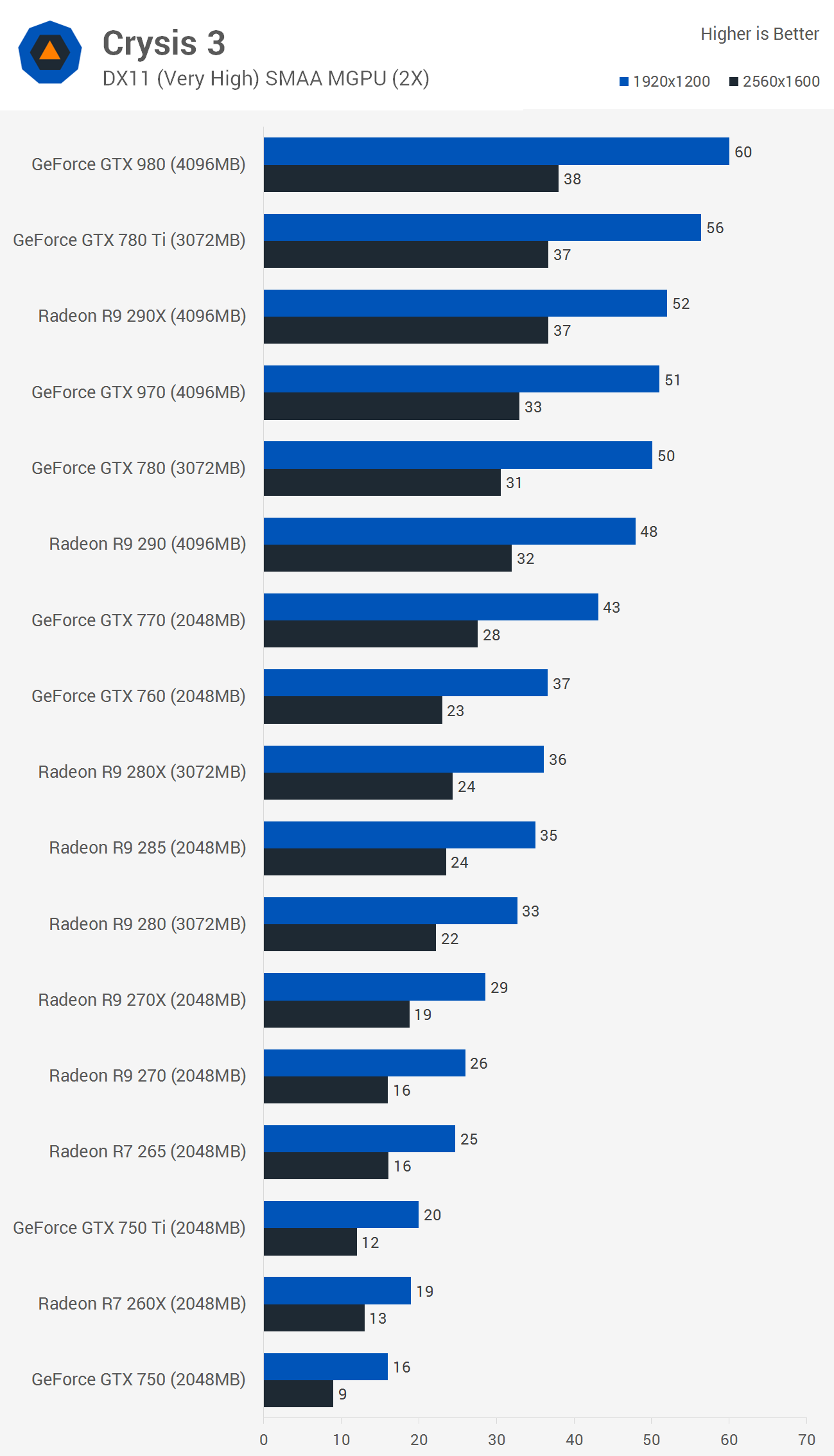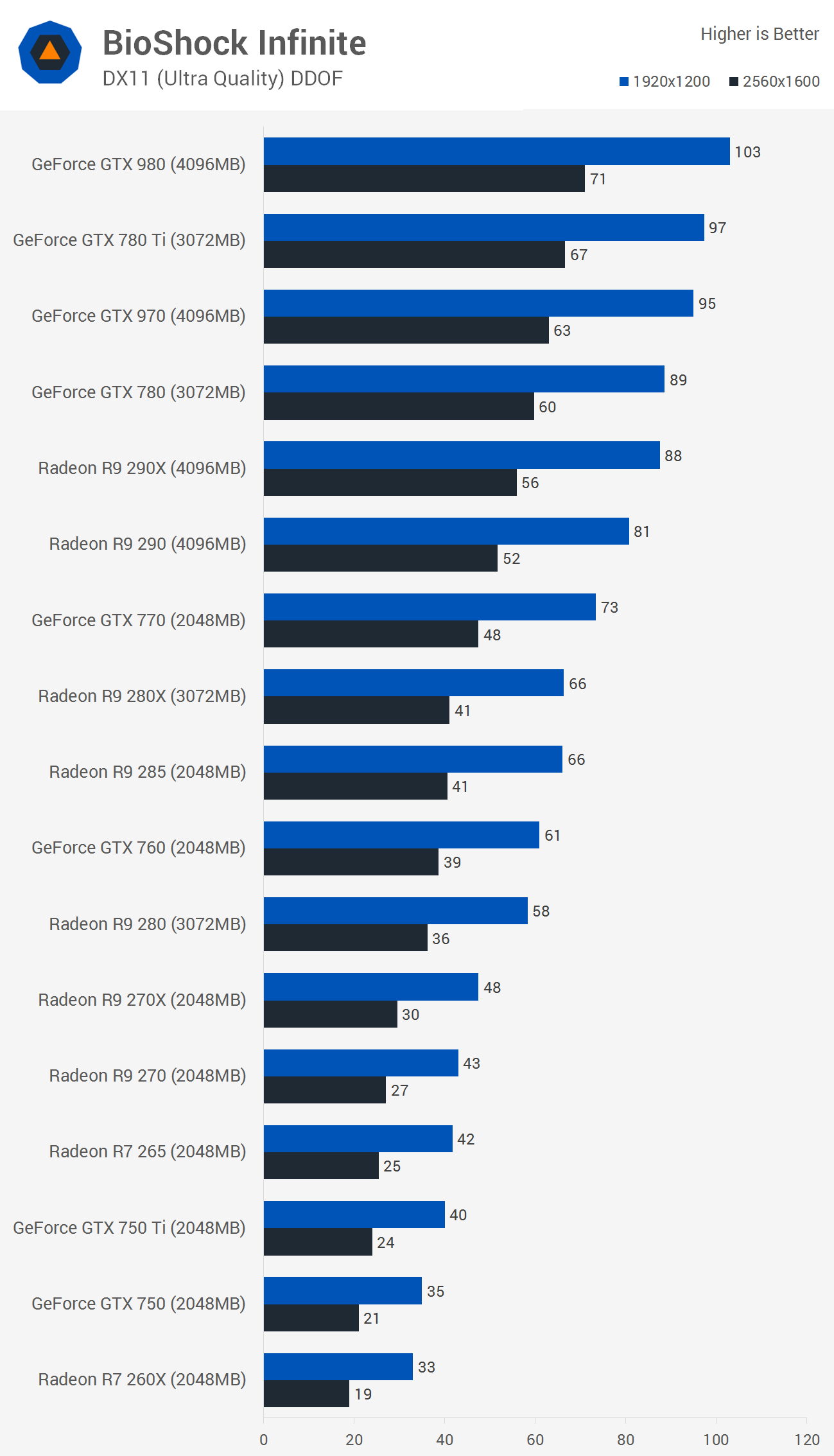Benchmarks: Crysis 3, BioShock

Starting from the bottom, the Radeon R7 260X takes on the GeForce GTX 750 with the former providing 19% more performance at 1920x1200. Next up, the R7 265 takes aim at the GTX 750 Ti and wins with a 25% margin while the R9 270 was just 4% faster than the R7 265 (the R9 270X was 16% faster).
The R9 280 has its sights set on the GTX 760, though this time the Nvidia's card was 12% faster while costing 10% more – a close battle.
The R9 290 makes the R9 280X pointless as it delivered 33% more performance for virtually the same price. The R9 290 also beat the GTX 770 by a 12% performance margin.
Moving up to the $300-$400 range, Nvidia and AMD are neck and neck, with the GTX 970 and R9 290X delivering virtually the same performance.
Beyond that it's all Nvidia as the GTX 980 beat the R9 290X by a 15% margin, though at a price premium of 57% you have to wonder if it is worth it.

All the GPUs tested here were able to provide playable performance at 1920x1200 in Bioshock Infinite. The GTX 750 averaged 35fps, 6% faster than the R7 260X, while GTX 750 Ti was still 5% slower than the R7 265 and the GTX 760 delivered 5% more performance than the R9 280X.
The R9 290 was 11% faster than the GTX 770 though Nvidia scored a win with its GTX 970 being 8% faster than the R9 290X, while the GTX 980 was 17% faster than the R9 290X.
